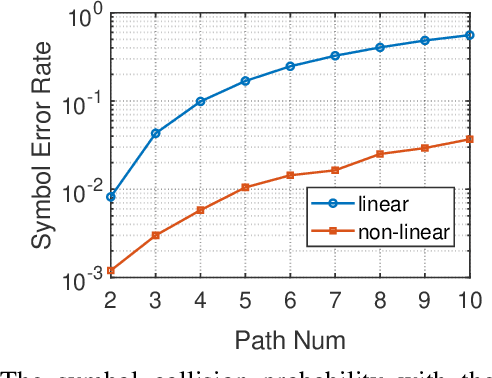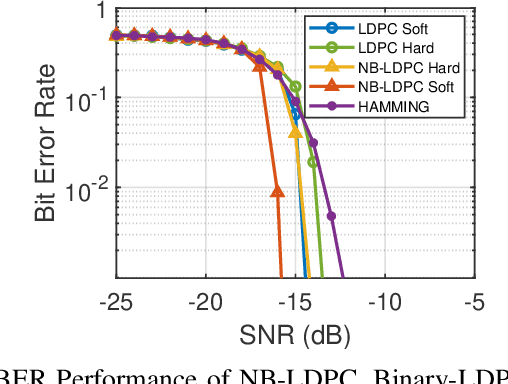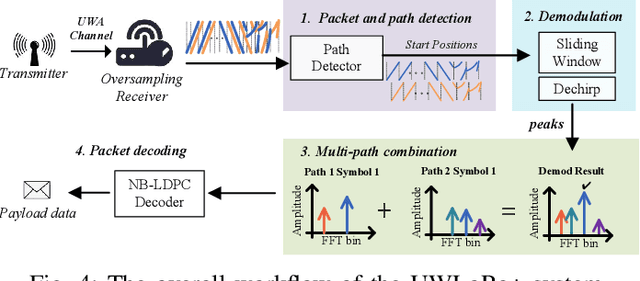Enqi Zhang
Revisiting Reset Mechanisms in Spiking Neural Networks for Sequential Modeling: Specialized Discretization for Binary Activated RNN
Apr 24, 2025Abstract:In the field of image recognition, spiking neural networks (SNNs) have achieved performance comparable to conventional artificial neural networks (ANNs). In such applications, SNNs essentially function as traditional neural networks with quantized activation values. This article focuses on an another alternative perspective,viewing SNNs as binary-activated recurrent neural networks (RNNs) for sequential modeling tasks.From this viewpoint, current SNN architectures face several fundamental challenges in sequence modeling: (1) Traditional models lack effective memory mechanisms for long-range sequence modeling; (2) The biological-inspired components in SNNs (such as reset mechanisms and refractory period applications) remain theoretically under-explored for sequence tasks; (3) The RNN-like computational paradigm in SNNs prevents parallel training across different timesteps.To address these challenges, this study conducts a systematic analysis of the fundamental mechanisms underlying reset operations and refractory periods in binary-activated RNN-based SNN sequence models. We re-examine whether such biological mechanisms are strictly necessary for generating sparse spiking patterns, provide new theoretical explanations and insights, and ultimately propose the fixed-refractory-period SNN architecture for sequence modeling.
Spiking Vision Transformer with Saccadic Attention
Feb 18, 2025Abstract:The combination of Spiking Neural Networks (SNNs) and Vision Transformers (ViTs) holds potential for achieving both energy efficiency and high performance, particularly suitable for edge vision applications. However, a significant performance gap still exists between SNN-based ViTs and their ANN counterparts. Here, we first analyze why SNN-based ViTs suffer from limited performance and identify a mismatch between the vanilla self-attention mechanism and spatio-temporal spike trains. This mismatch results in degraded spatial relevance and limited temporal interactions. To address these issues, we draw inspiration from biological saccadic attention mechanisms and introduce an innovative Saccadic Spike Self-Attention (SSSA) method. Specifically, in the spatial domain, SSSA employs a novel spike distribution-based method to effectively assess the relevance between Query and Key pairs in SNN-based ViTs. Temporally, SSSA employs a saccadic interaction module that dynamically focuses on selected visual areas at each timestep and significantly enhances whole scene understanding through temporal interactions. Building on the SSSA mechanism, we develop a SNN-based Vision Transformer (SNN-ViT). Extensive experiments across various visual tasks demonstrate that SNN-ViT achieves state-of-the-art performance with linear computational complexity. The effectiveness and efficiency of the SNN-ViT highlight its potential for power-critical edge vision applications.
A Compressive Memory-based Retrieval Approach for Event Argument Extraction
Sep 14, 2024



Abstract:Recent works have demonstrated the effectiveness of retrieval augmentation in the Event Argument Extraction (EAE) task. However, existing retrieval-based EAE methods have two main limitations: (1) input length constraints and (2) the gap between the retriever and the inference model. These issues limit the diversity and quality of the retrieved information. In this paper, we propose a Compressive Memory-based Retrieval (CMR) mechanism for EAE, which addresses the two limitations mentioned above. Our compressive memory, designed as a dynamic matrix that effectively caches retrieved information and supports continuous updates, overcomes the limitations of the input length. Additionally, after pre-loading all candidate demonstrations into the compressive memory, the model further retrieves and filters relevant information from memory based on the input query, bridging the gap between the retriever and the inference model. Extensive experiments show that our method achieves new state-of-the-art performance on three public datasets (RAMS, WikiEvents, ACE05), significantly outperforming existing retrieval-based EAE methods.
Combating Multi-path Interference to Improve Chirp-based Underwater Acoustic Communication
Nov 29, 2023



Abstract:Linear chirp-based underwater acoustic communication has been widely used due to its reliability and long-range transmission capability. However, unlike the counterpart chirp technology in wireless -- LoRa, its throughput is severely limited by the number of modulated chirps in a symbol. The fundamental challenge lies in the underwater multi-path channel, where the delayed copied of one symbol may cause inter-symbol and intra-symbol interfere. In this paper, we present UWLoRa+, a system that realizes the same chirp modulation as LoRa with higher data rate, and enhances LoRa's design to address the multi-path challenge via the following designs: a) we replace the linear chirp used by LoRa with the non-linear chirp to reduce the signal interference range and the collision probability; b) we design an algorithm that first demodulates each path and then combines the demodulation results of detected paths; and c) we replace the Hamming codes used by LoRa with the non-binary LDPC codes to mitigate the impact of the inevitable collision.Experiment results show that the new designs improve the bit error rate (BER) by 3x, and the packet error rate (PER) significantly, compared with the LoRa's naive design. Compared with an state-of-the-art system for decoding underwater LoRa chirp signal, UWLoRa+ improves the throughput by up to 50 times.
 Add to Chrome
Add to Chrome Add to Firefox
Add to Firefox Add to Edge
Add to Edge